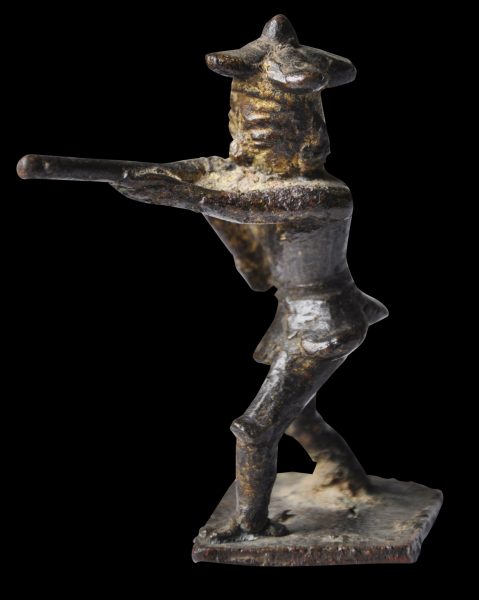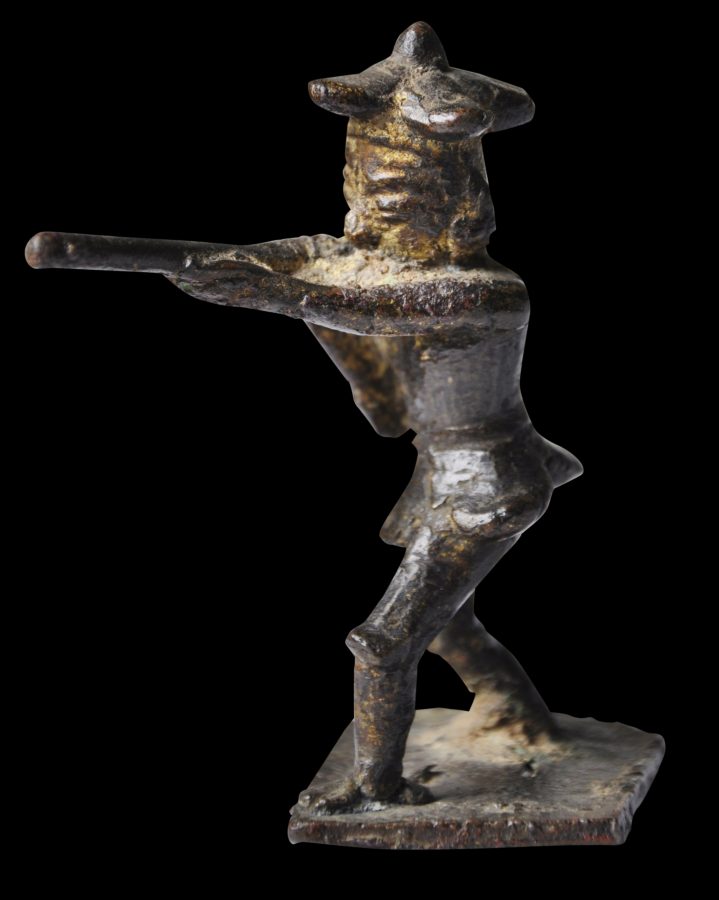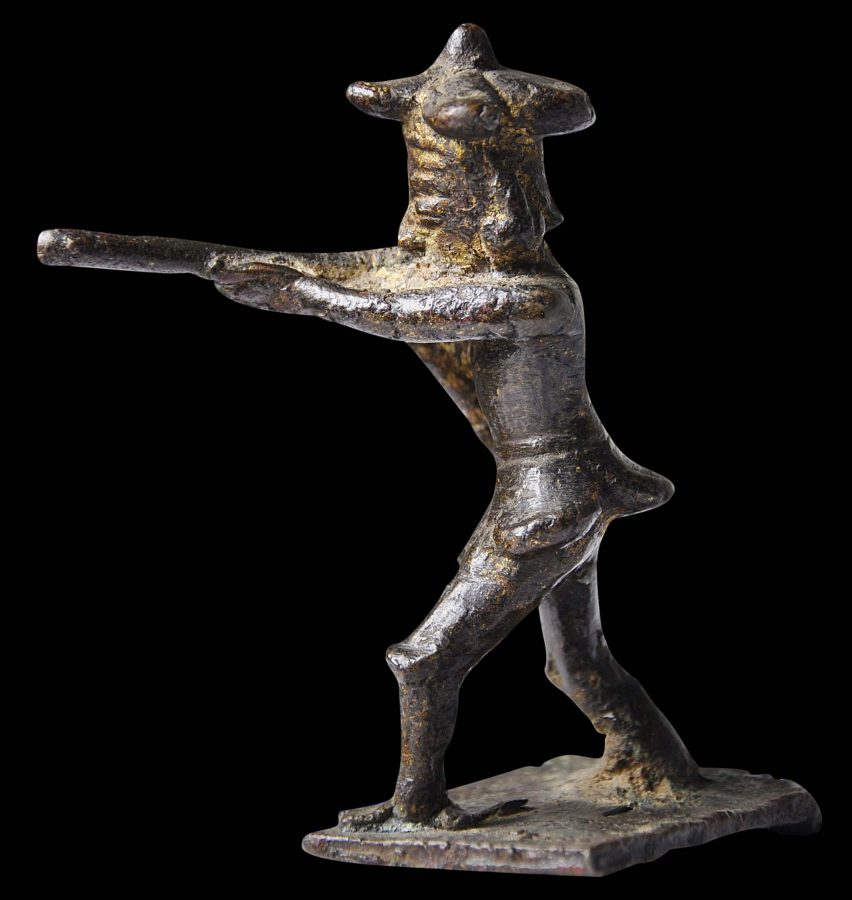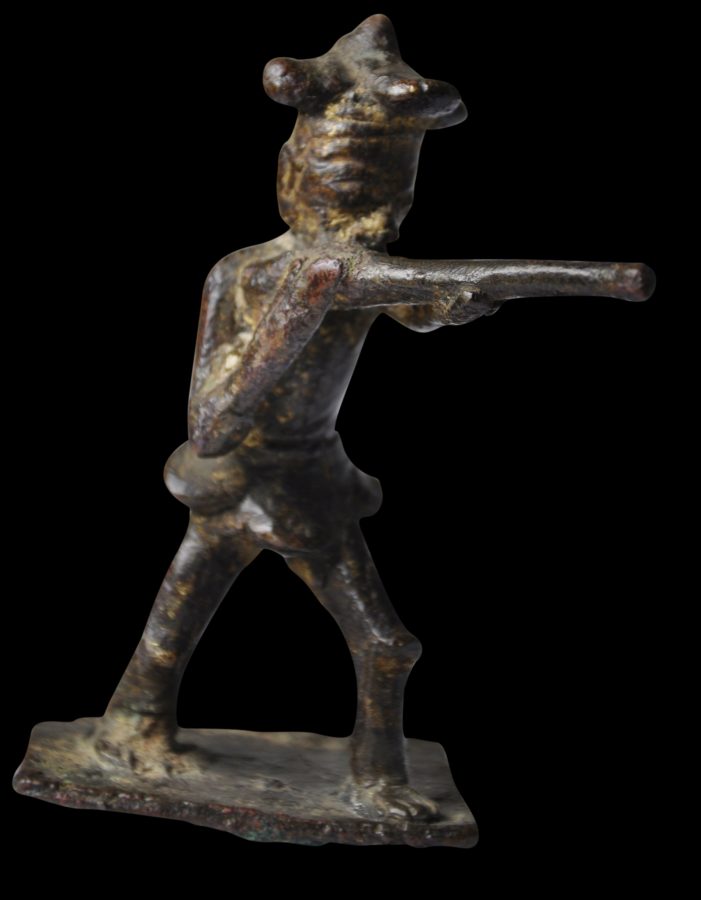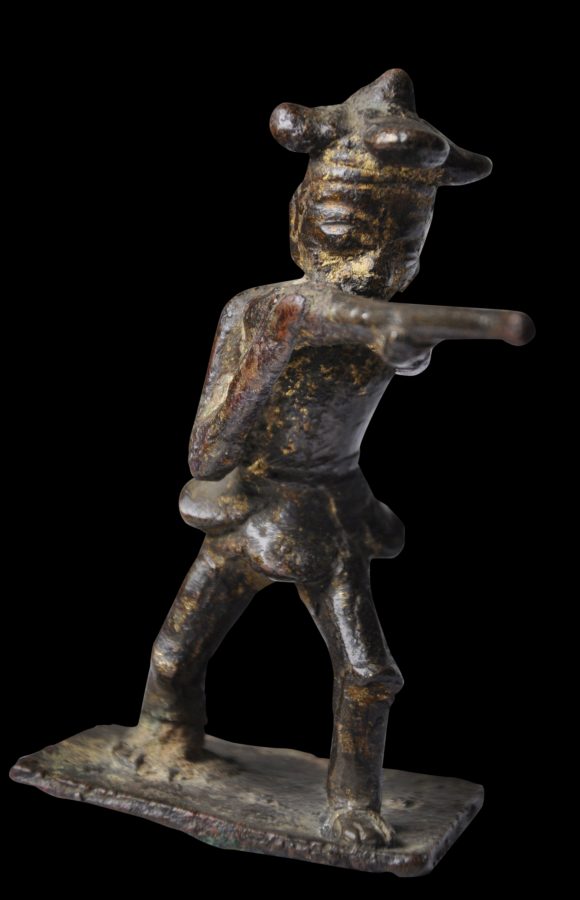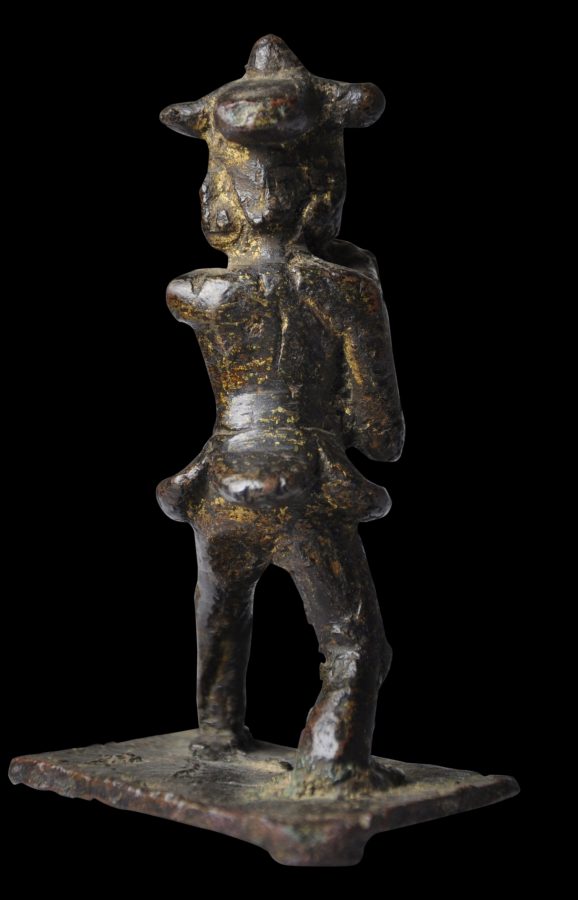This small, solid bronze figure of a soldier has been cast with real dynamism. The soldier’s stance and the way in which he holds his rifle shows real purpose. He crouches, and has a four-corners hat, a four-cornered skirt, and bare feet. It is a talismanic item but probably has been modelled after the cast lead toy soldiers that were being manufactured in England in the 18th century some of which might have found their way to upper Burma.
Traces of gilding suggest that originally the figure was covered in gold leaf; and indeed this suggests the figure’s purpose – it was made to be placed in a reliquary chamber that was part of the Shweibawgyn Pagoda at Shwebo, a city in Burma’s Sagaing Region, 110 kilometres north-west of Mandalay, between the Irrawaddy and the Mu rivers.
Importantly, the city was the origin of the last royal dynasty to rule Burma, the Konbaung Dynasty, established by King Alaungpaya in 1752. Shwebo served as Alaungpaya’s capital from 1752 to 1760. King Naungdawgyi, Alaungpaya’s eldest son, built the Shweibawgyn Pagoda in Shwebo during his reign (1760-63).
The soldier here resembles those who would have defended the Burmese against the Mon during the wars. According to Fraser-Lu (1994, p. 128) who illustrates a related crouching, rifle-wielding soldier wearing a cornered hat that was clearly made alongside the example here, such soldiers were included in reliquary chambers in the Pagoda to protect it into posterity, just as they protected the kingdom in real life.
The figure here has a superb dark patina consistent with an 18th century dating. It is stable and has no damage or repairs. It was acquired in the UK and almost certainly has been in the UK since colonial times.
References
Fraser-Lu, S., Burmese Crafts: Past and Present, Oxford University Press, 1994.


